 by our College Data Analytics Team
by our College Data Analytics TeamHallmark total enrollment is approximately 987 students. 929 are undergraduates and 58 are graduate students.
Male/Female Breakdown of Undergraduates
The full-time Hallmark undergraduate population is made up of 34% women, and 66% men.
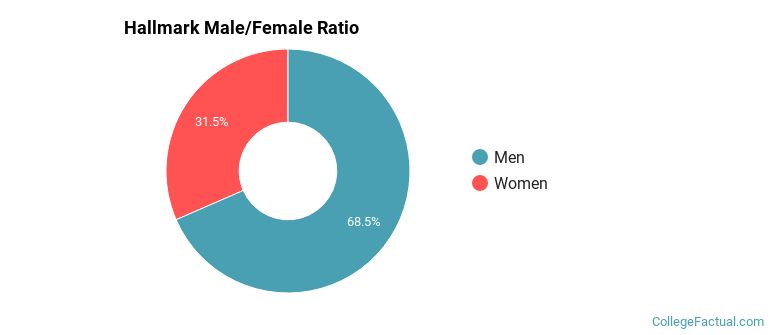
For the gender breakdown for all students, go here.
Hallmark Racial/Ethnic Breakdown of Undergraduates
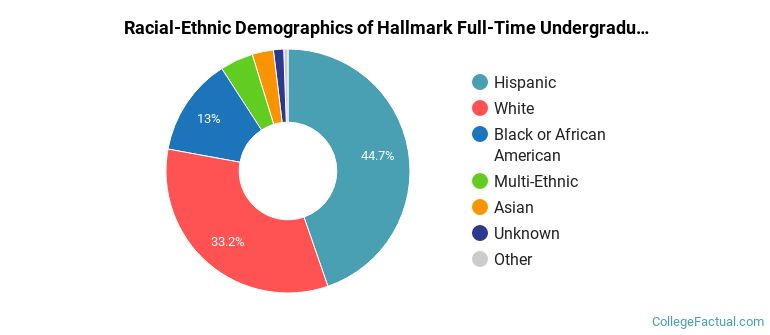
| Race/Ethnicity | Number |
|---|---|
| Hispanic | 422 |
| White | 280 |
| Black or African American | 110 |
| Multi-Ethnic | 46 |
| Unknown | 35 |
| Asian | 25 |
| Native Hawaiian or Pacific Islander | 6 |
| International | 0 |
See racial/ethnic breakdown for all students.
Male/Female Breakdown of Graduate Students
About 38% of full-time grad students are women, and 62% men.
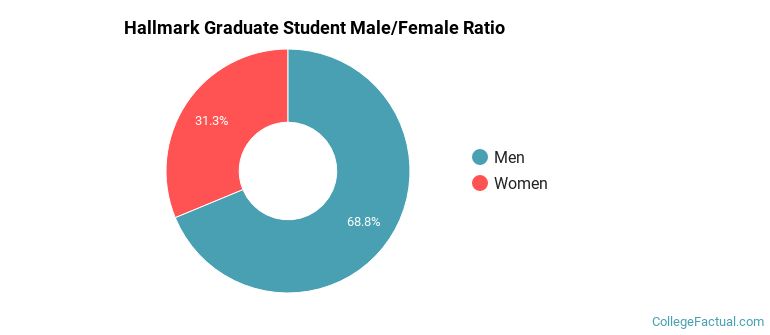
For the gender breakdown for all students, go here.
Hallmark Racial-Ethnic Breakdown of Graduate Students
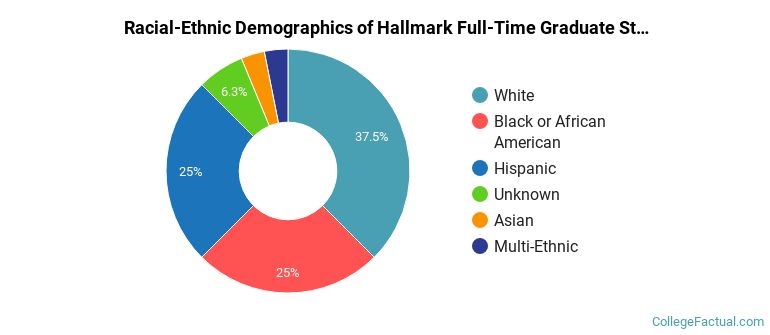
| Race/Ethnicity | Number |
|---|---|
| Hispanic | 25 |
| White | 13 |
| Black or African American | 11 |
| Multi-Ethnic | 4 |
| Asian | 3 |
| Unknown | 2 |
| Native Hawaiian or Pacific Islander | 0 |
| International | 0 |
See racial/ethnic breakdown for all students.
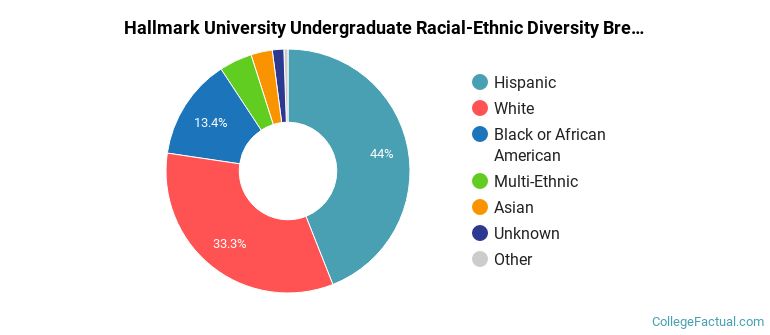
| Race/Ethnicity | Number |
|---|---|
| Hispanic | 447 |
| White | 293 |
| Black or African American | 121 |
| Multi-Ethnic | 50 |
| Unknown | 37 |
| Asian | 28 |
| Native Hawaiian or Pacific Islander | 6 |
| International | 0 |
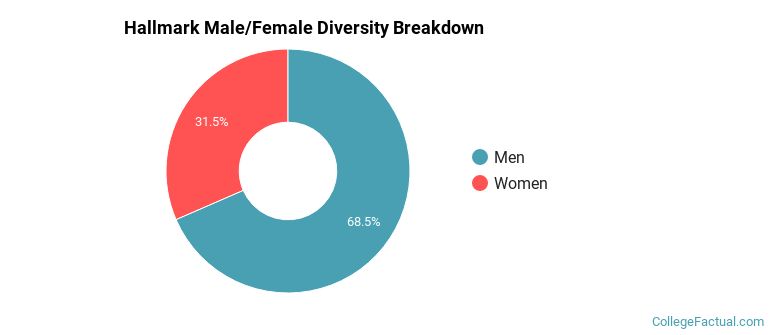
There are approximately 339 female students and 648 male students at Hallmark.
Hallmark ranks 2,049 out of 2,183 when it comes to geographic diversity.
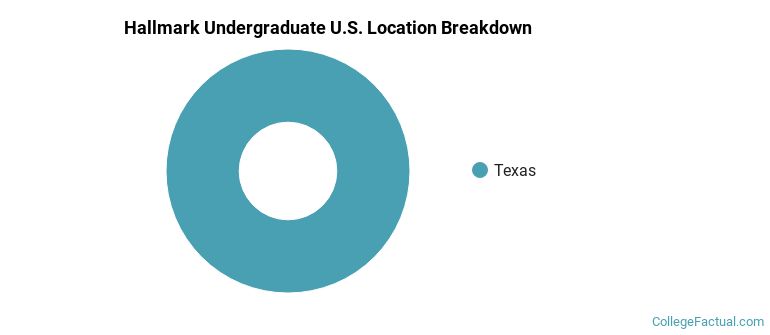
The undergraduate student body is split among 1 states (may include Washington D.C.). Click on the map for more detail.
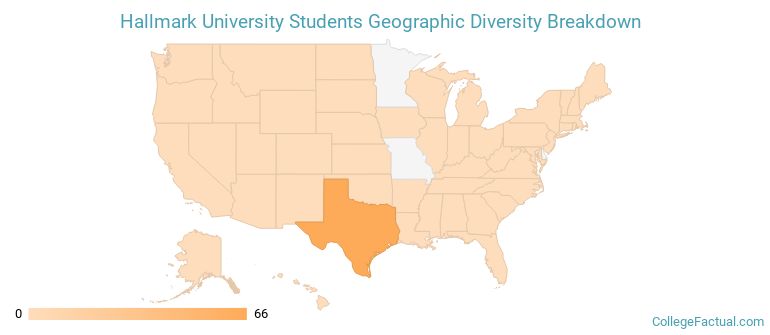
| State | Amount |
|---|---|
| Texas | 66 |
| Alaska | 0 |
| Alabama | 0 |
| Arkansas | 0 |
| Arizona | 0 |
A traditional college student is defined as being between the ages of 18-21. At Hallmark, 14.61% of students fall into that category, compared to the national average of 60%.
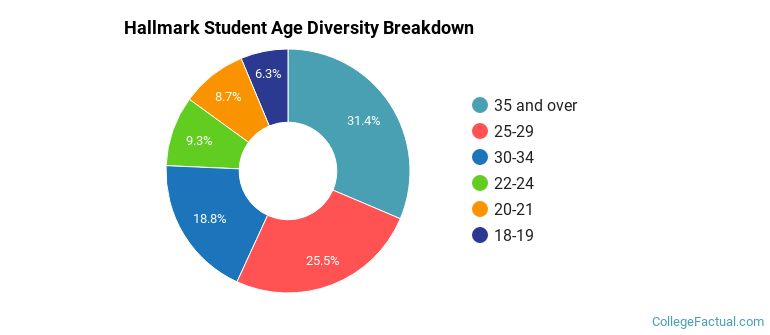
| Student Age Group | Amount |
|---|---|
| 35 and over | 270 |
| 25-29 | 219 |
| 30-34 | 162 |
| 22-24 | 80 |
| 20-21 | 75 |
| 18-19 | 54 |
| Under 18 | 0 |
Footnotes
*The racial-ethnic minorities count is calculated by taking the total number of students and subtracting white students, international students, and students whose race/ethnicity was unknown. This number is then divided by the total number of students at the school to obtain the racial-ethnic minorities percentage.
References
Department of Homeland Security Citizenship and Immigration Services
Learn more about how College Factual creates their Diversity Rankings.